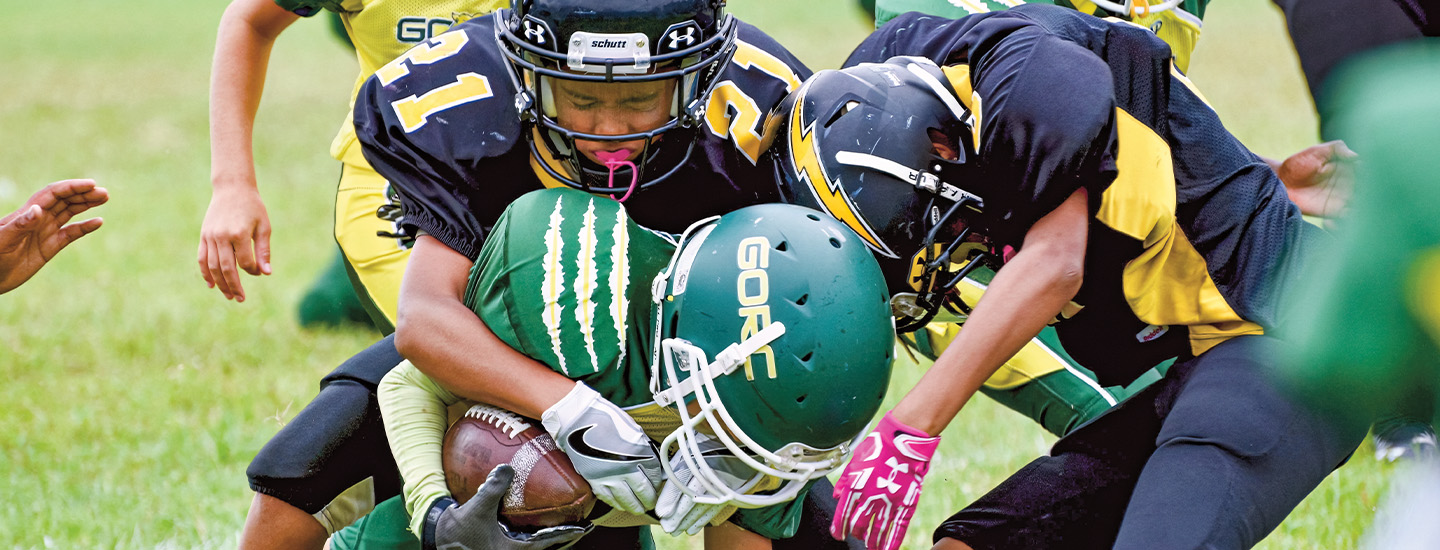Courtesy of the Lystedt family
October 12, 2006, was cool and clear in Seattle, Washington. It was a perfect day for football. Zackery Lystedt, 13, was a star player on his Tahoma Junior High team. He’d made two big tackles that afternoon. Tahoma was in the lead.
Late in the game’s first half, Zack tackled a runner rushing toward the end zone. Both boys fell to the ground. Zack’s head smacked against the ground.
The other boy quickly got up.
Zack did not.
Zack lay on his back, grabbing his head. He writhed in pain. His coach ran to him. Seconds ticked by.
The crowd remained silent.
Finally, Zack sat up. People cheered as he walked slowly off the field. Zack sat down to rest. The game went on.
But something was happening inside Zack’s head. Zack had a concussion, a kind of brain injury. When his head hit the ground, his brain shook violently against the inside of his skull. Sitting on the bench, Zack seemed OK. But his brain had been badly injured.
October 12, 2006, was cool and clear in Seattle, Washington. It was a great day for football. Zackery Lystedt was 13. He was a star player on his Tahoma Junior High team. He’d made two big tackles that afternoon. Tahoma was in the lead.
In the game’s first half, Zack tackled a runner rushing toward the end zone. Both boys fell down. Zack’s head smacked against the ground.
The other boy got up. Zack did not.
Zack lay on his back, holding his head. He writhed in pain. His coach ran to him. Seconds ticked by. The crowd was silent.
Finally, Zack sat up. People cheered as he walked off the field. Zack sat down to rest. The game went on.
But something was happening inside Zack’s head. When his head hit the ground, his brain had shaken violently against the inside of his skull. Zack looked OK. But he had a concussion. That’s a kind of brain injury.
October 12, 2006, was cool and clear in Seattle, Washington. It was a perfect day for football. Zackery Lystedt, 13, was a star player on his Tahoma Junior High team. He’d made two big tackles that afternoon. Tahoma was in the lead.
Late in the game’s first half, Zack tackled a runner rushing toward the end zone. Both boys fell down, and Zack’s head smacked against the ground.
The other boy quickly got up.
Zack did not.
Lying on his back, Zack clutched his head and writhed in pain. His coach ran over to him. Seconds ticked by.
The crowd remained silent.
Zack finally sat up, and people cheered as he walked slowly off the field. The game went on while Zack sat and rested.
But something was happening inside Zack’s head. Zack had a concussion, a type of brain injury. When his head hit the ground, his brain shook violently against the inside of his skull. Sitting on the bench, Zack appeared unharmed—but his brain had been badly injured.

